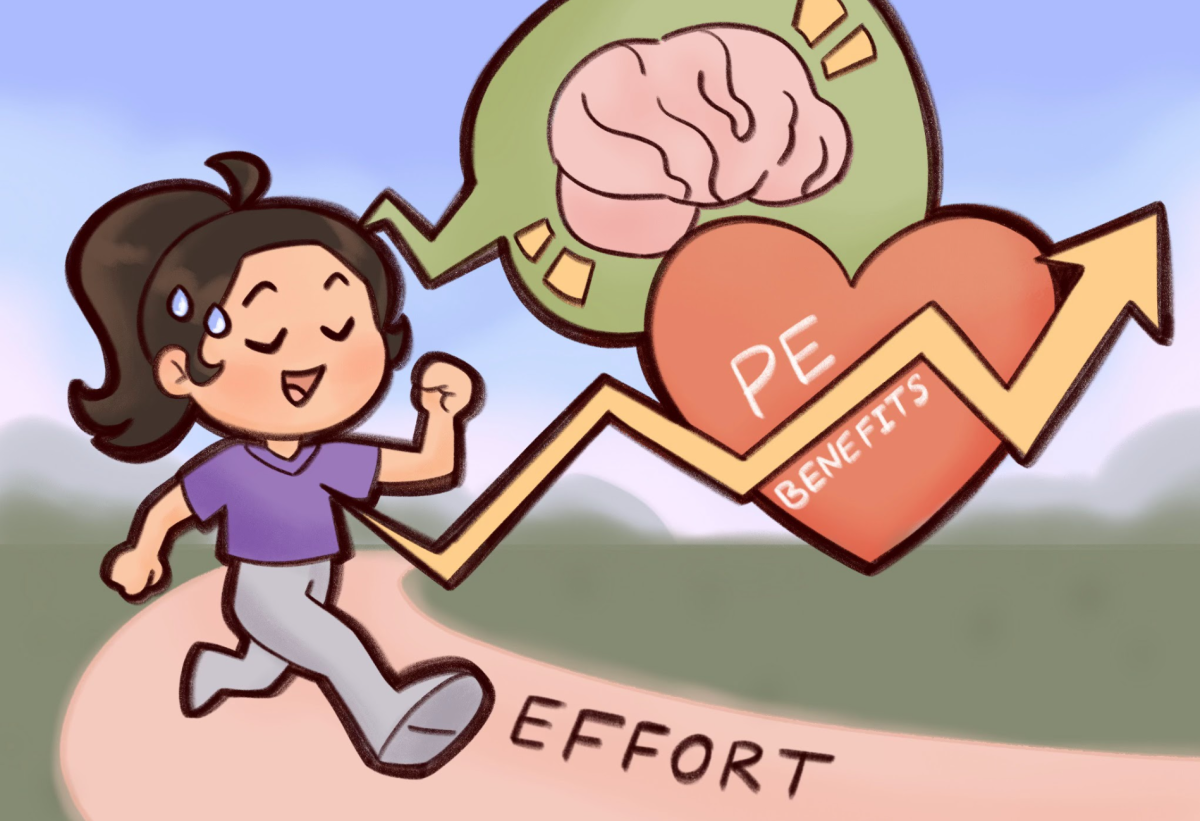Feet reluctantly shuffle towards the school track as students sigh. These students know that today’s PE class agenda includes an assigned mile followed by a written reflection, and they are not much to do either.
Instead of underestimating the value of physical education classes, students should prioritize its benefits, actively engaging with the curriculum to build healthy habits while joining a larger effort in pursuing this lifestyle. To foster these benefits for themselves in the long run, students with lower participation levels should especially focus on putting individual best effort into the activities and assignments given in class.
Students must be aware that the benefits from participating actively in PE classes come down to the lifestyle habits they want to create. These classes give students the opportunity to engage in physical activity for three days per week, and students should take advantage of them. This can especially benefit high schoolers since they are at a key age when building healthy, active habits is imperative, according to PE teacher Bryan Resnick.
Since everyone needs physical activity, PE class can also provide a sense of community for students as an opportunity to remind them about the collective effort towards positive lifestyle changes many others may already strive towards. As PE teacher and Athletic Director Peter Abe notes, physical fitness is a universal necessity no matter one’s career or hobbies. This new outlook can encourage students to join this unified movement towards good health.
The established standards and learning objectives behind each PE class further justify student participation. These required standards assess whether students can physically perform a given task, understand the task and develop social emotional learning skills, according to Assistant Principal James Coney, who oversees the Physical Education department. These standards highlight how PE classes are structured to specifically help students grow.
A study from The University of Chicago Press Journals found a positive correlation between physical activity and academic performance across North Carolina middle and high schools: those who were in school sports performed academically higher than those who were not. This correlation further justifies the importance of engaging in PE classes, especially if students’ schedules have built-in time blocks dedicated to these courses and activities. Since many students are required to take PE as underclassmen if they are not doing a sport, this further emphasizes the benefits of active participation.
Some may claim that students who engage in sports or intense physical activity outside of school should be exempt from participating in PE. However, along with benefits that range from reducing chances of chronic illness to maintaining better judgment skills, Abe said that PE can also teach students the importance of modifying exercise. Despite the stigma around exercise modification, this can actually reduce injury risks and maintain good form, according to fitness program SilverSneakers.
Additionally, students may be less motivated on certain days due to external factors like the weather, according to Resnick. But despite these conditional exceptions, students should focus on participating actively for the majority of the class time throughout the year.
“I think students pushing themselves a little bit above their comfort level is what I see most of the time,” Resnick said. “I’m big on students giving their best effort and sometimes students understanding what that effort is is sometimes the difficult part.”
PE classes have much to offer, and students should embrace their educational benefits, which can last them throughout their lives. By actively engaging in PE classes and the lessons the curriculum has to offer, students can not only develop individually but also foster appreciation for the department.





